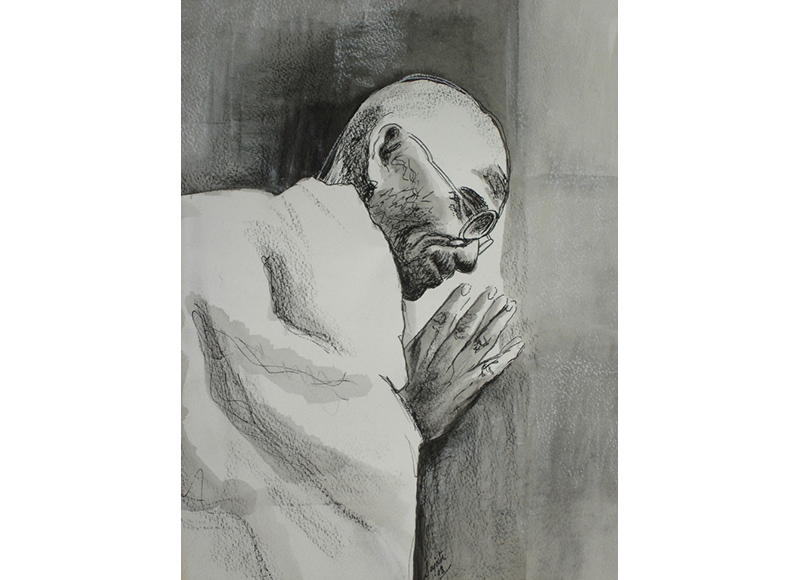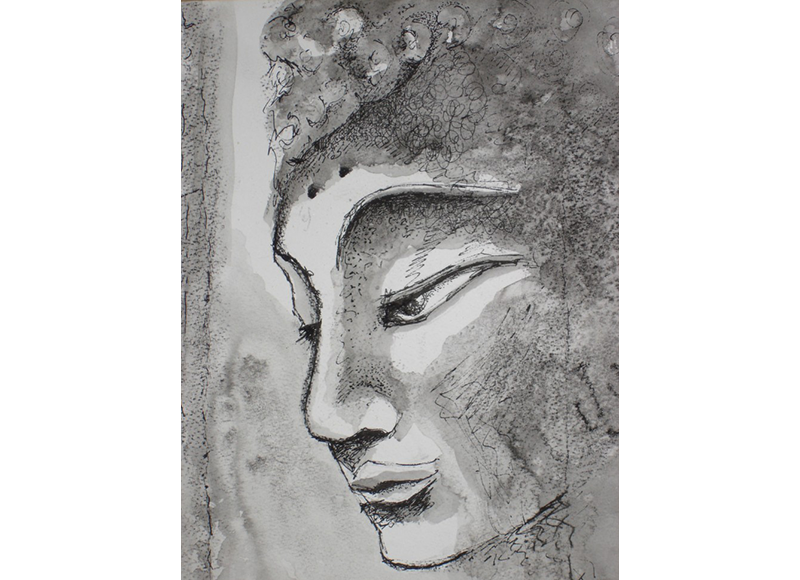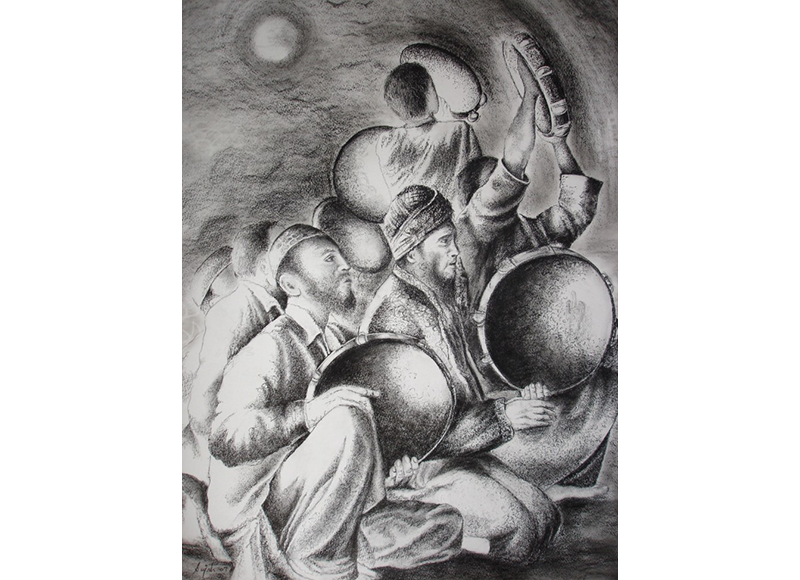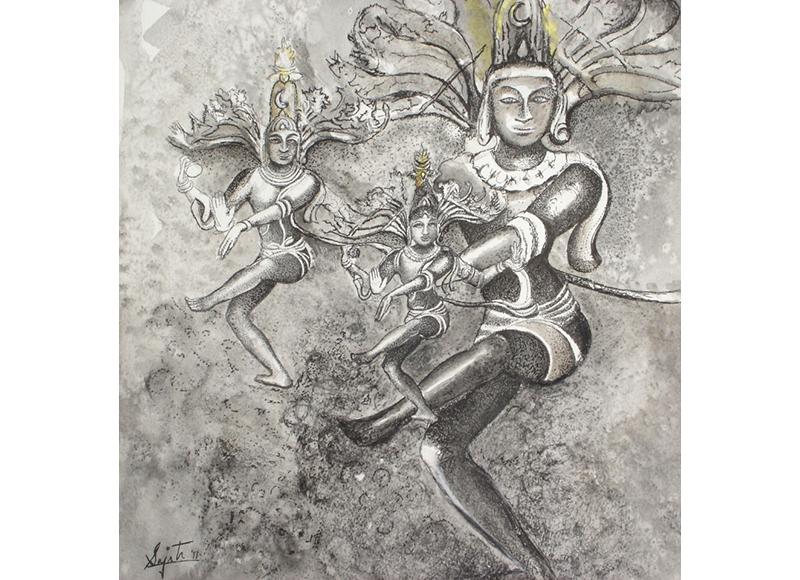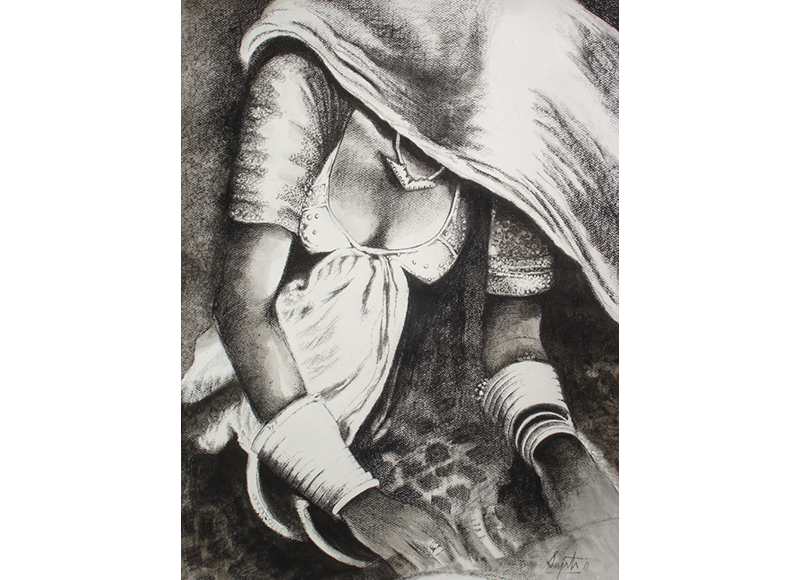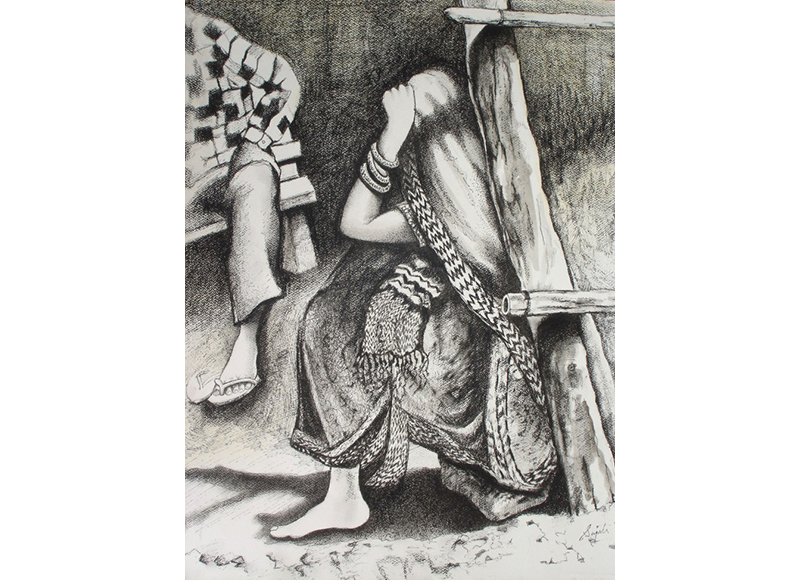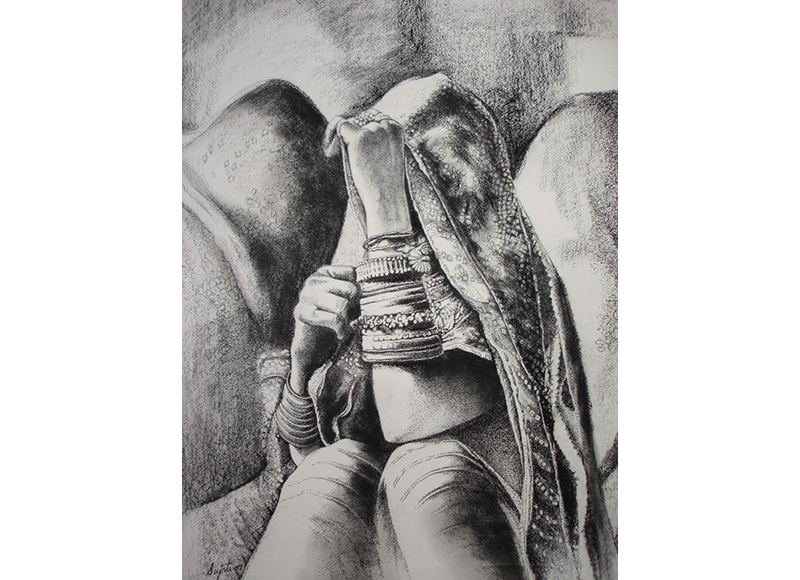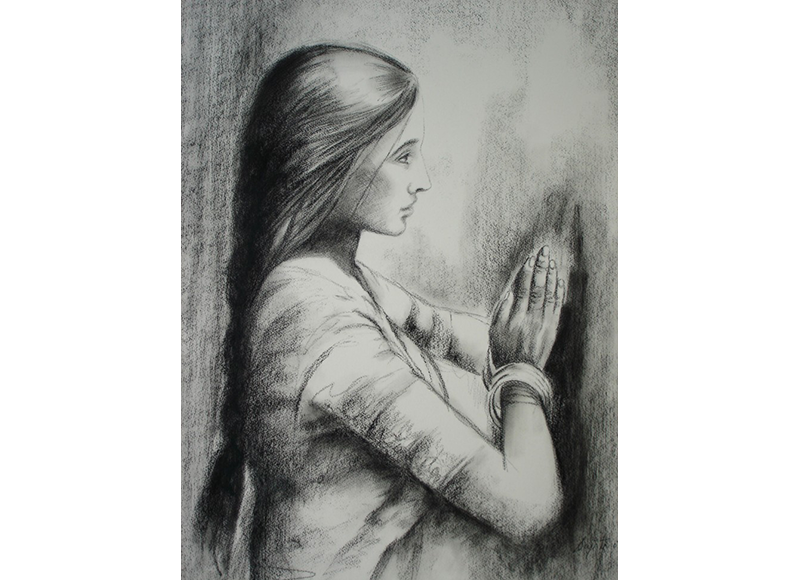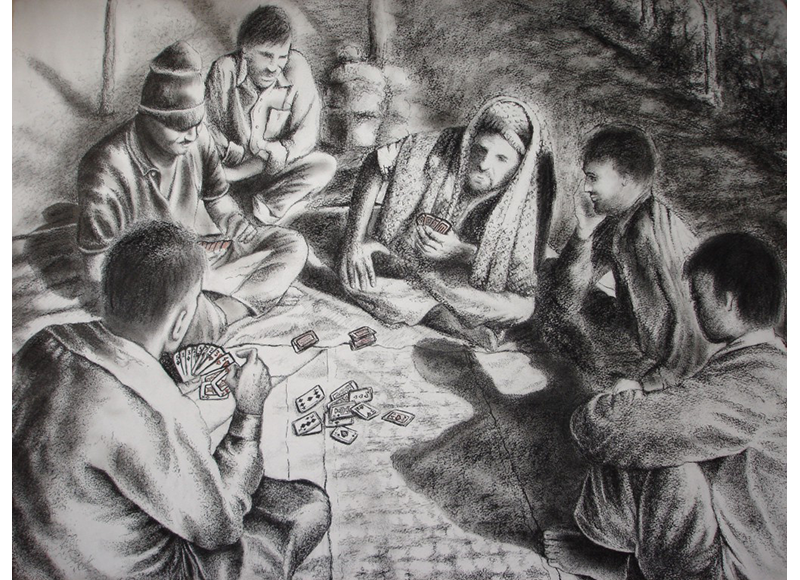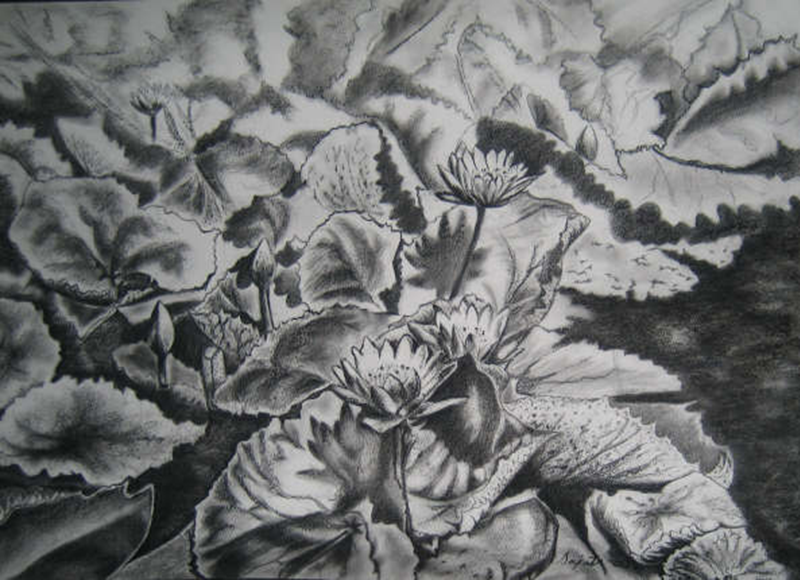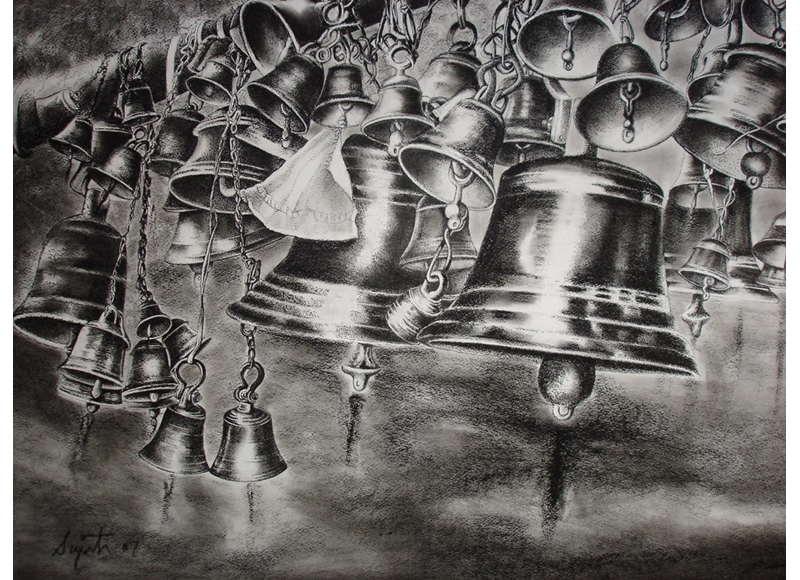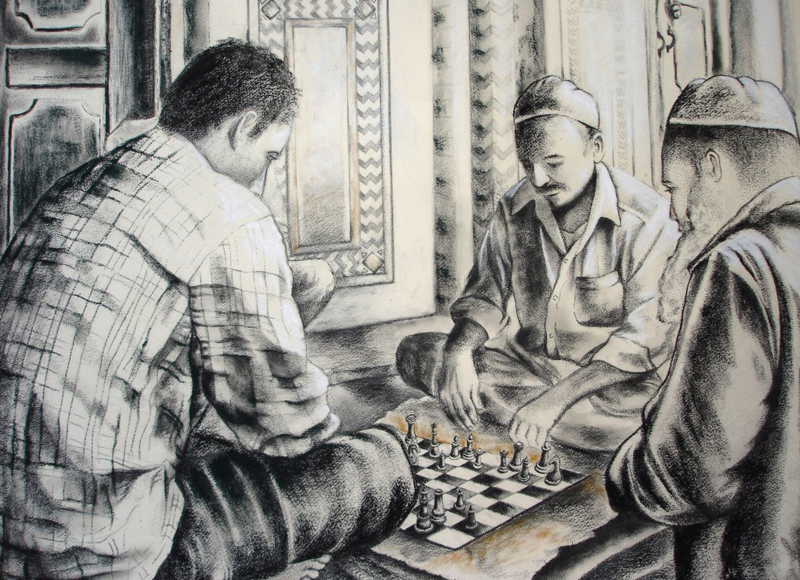Charcoal, Ink & Conte
“Spirituality is indeed the master key to the Indian mind; the sense of the infinitive is native to it.”
– Sri Aurobindo
Sujata Dere explores the marvels and theatricality of daily life, replete with a captivating sense of mystery and profound aestheticism. Wielding her materials, charcoal, ink and conté with the deftness of traditional cave painters, classical and Old master artists, she reawakens the deft detail of drawing. Paper lends itself to narrative tales: On this material which is so free…and goes with the space, images of simplicity blend with the romance and spirituality of life.
As the artist writes of her work, “my art is an expression of my inner most rhythms, my deepest and most heartfelt feelings, of the beauty that I see in the harmony between all beings.”
Subjects drawn from afternoon gatherings of card and chess players, camels, horses transport the viewer to a confluence of timelessness, the crossroads of the past, present, and future dimensions. Sufi musicians, dancers in the throes of ‘divine energy’ unfold and narrate their inspiration. Bells, asanas, and architectonic sites belie the strength of her pen and pencils. Intense drapery, contours of bodies at rest and in movement. The beauty and harmony inherent in moments of existence appear from the actions of her fingers. Shadows and line, cross-hatching and swirling strokes cover the picture planes.
Respected in all cultures throughout time and place, drawing as one of the most vital, heartfelt forms of visual expression, marks to create an image, form or shape, onto the medium of paper and board; Often exploratory, it unfolds with considerable emphasis on observation and composition. Dere habitually employs conté, a mélange of compressed powdered graphite or charcoal mixed with a wax or clay base.
Shading varies the tonal values to conceive its surface and render shadows. Dere’s illumination enhances an interplay of the silhouette and its external realms. Well-crafted studies are essential creations of art, and reflect the qi of an artist, as they cannot lie, are not overdone, cannot be corrected. The spaces of positive and negative work conjure musical strophes. Herein unfolds the power of the hand to eye to mind to heart to spirit….
– Elizabeth Rogers


